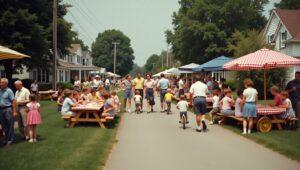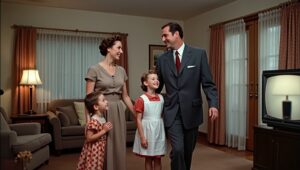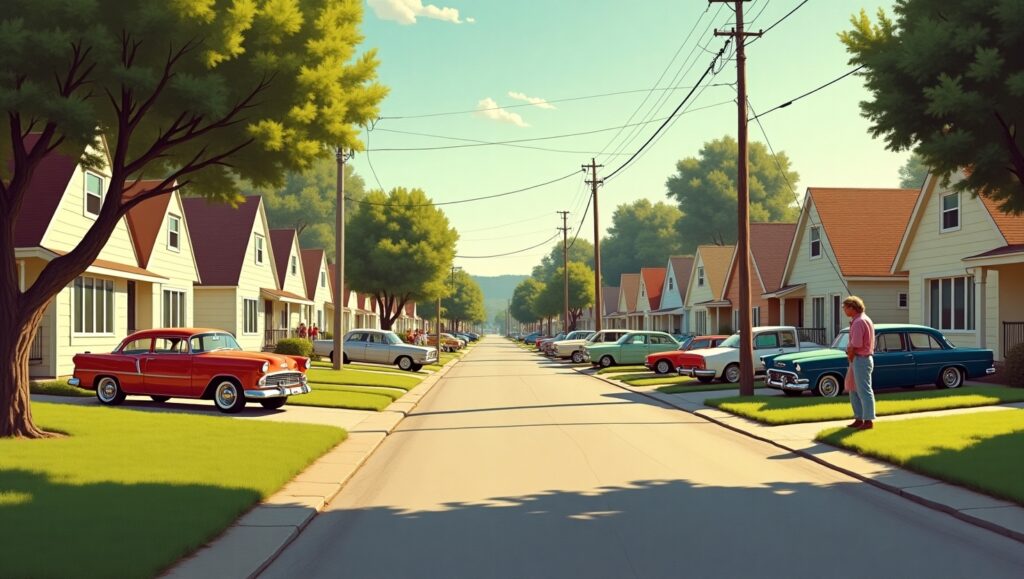In the decade of the 1950s, the United States experienced a substantial change, both with new homes, and new home dwellers. Millions of middle- or white-collar Americans began moving out of the city and into the newly created suburbs following WWII. A Sprawl of Your Mind The suburbs, with the single-family homes and manicured lawns and clearly delineated highways, weren’t just a move in geography. They were emblematic of a new way of life predicated on stability, comfort and togetherness.
One of the key benefits of the new suburban lifestyle of the 1950s was that it fostered a strong sense of community and family life. This shift had a profound impact on how people lived, interacted, and raised families during that era.
The Growth of Suburbia in Post-War America
After World War II a number of factors combined to make suburbia grow. A flourishing economy, booming post-war baby boom population growth and government-supported home mortgage assistance programs like the GI Bill helped homeownership become possible for an ever-greater pool of the U.S. populace. William Levitt and others built whole suburbs of mass-produced houses that went up, it seemed, overnight.
These new suburbs provided Americans with a new way of life — one based on open space, security, and togetherness.
A Home-Centered Lifestyle
The Nuclear Family Is More Important Than Realism
The suburban way of life in the 1950s emphasized the nuclear family of a mother and father and two or more children. The architecture of suburbia at the time tended to follow suit, including multiple bedrooms, a living room for the family to gather, and yards that offered a place for outdoor play.
Families living in a standalone house with a private yard had more space and privacy than they were accustomed to in city apartments. The context endorsed household practices as evidenced by collective meals and neighbourhood meeting as well as community engagement.
Structured Domestic Routines
In the suburban model, home life became more organized and predictable. Many families followed a daily routine that revolved around work, school, household responsibilities, and leisure. Suburban life often allowed one parent, typically the father, to commute to work while the other parent managed the household. This structure encouraged consistency and routine in family life, elements that many found reassuring after the uncertainties of the war years.
 A Deepened Sense of Community
A Deepened Sense of Community
Neighborhood Cohesion
One of the most obvious rewards of 1950s suburbia was the camaraderie created within communities. Houses were built close enough to foster interaction and streets were often lined with neighbors who knew one another. Children roamed together in yards and cul-de-sacs, parents hung out on porches and at neighborhood gatherings.
Common habits and lifestyles formed a shared cultural context, and made it easier for neighbors to connect. Communities created block parties, barbecues, and seasonal parties, building stronger social relationships.
Civic Engagement and Local Participation
Suburbanites in 1950 made plenty of use of local institutions, like schools, churches, and civic clubs. PTA’s, scout troops, volunteer groups were well-attended and contended. This strong culture of civic engagement encouraged students to feel more connected to their local area and to feel a sense of ownership and concern for their community.
Local parks and swimming pools and recreation centers were also places where you met other people and made friends and reinforced, to whatever extent, a shared suburban identity.
The Role of Design in Community Life
Planned Neighborhoods
Suburbia in the 1950s was sometimes intentionally built around city-like conveniences. The streets were designed to minimize traffic, make the grounds safer and more peaceful, and incorporate all kinds of gardens and groves. Schools, stores and even churches lay a short walk or quick drive away in most neighborhoods, supporting an open community.
The homogeneity of home design and community layout was visually soothing to many residents. “In these planned environments it was not the intention to isolate people but to be conducive to chance encounters and the opportunity to have a word.\
Green Spaces and Recreation
Yards, parks and playgrounds defined suburbia. Such green spaces promoted play in the outdoors for children, and allowed opportunities for neighbors to congregate while overseeing their families or walking their pets.
Yards were used for barbecuing foods, planting gardens and holding impromptu social gatherings, further contributing to a culture of hospitality and neighborliness among Americans. Recreation was a personal pursuit but also a social event, enjoyed by neighbors who were likely leading similar lifestyles and holding similar values.
Convenience and Comfort in Daily Living
Accessibility to Modern Amenities
The post-war suburbs were built with modern living in mind. Homes were equipped with up-to-date appliances such as refrigerators, washing machines, and televisions, making domestic life more efficient and enjoyable. The availability of such conveniences supported the idea of the home as a central place of comfort and security.
Suburban shopping centers, which became popular during this era, provided convenient access to groceries, clothing, and household goods. With stores and services nearby, residents could meet many of their needs without traveling far from home.
Reliable Transportation and Infrastructure
Automobile ownership surged in the 1950s, and suburban development often included wide roads, garages, and driveways to accommodate this trend. The ability to commute to work or school by car gave families more flexibility and independence. It also contributed to a feeling of control over one’s environment—an important aspect of the suburban ideal.
Infrastructural improvements such as paved roads, efficient utilities, and well-maintained public facilities supported a high standard of living and contributed to a sense of stability and predictability.
Educational and Social Opportunities
Proximity to Schools
Expansion into the suburbs also meant new schools – and a number that were within walking or biking distance. This proximity allowed children to attend school in a known, secure environment as well as allowed for the participation of parents in educational activities and projects.
There was a shared culture of education, and the suburban structure created an environment conducive to strong family-school relations.
Youth Activities and Enrichment
In addition to formal education, suburban life in the 1950s offered a range of structured activities for children and teenagers. From sports leagues and music lessons to scouting and recreational clubs, young people had ample opportunities to engage in extracurricular activities close to home.
These programs not only enriched children’s lives but also strengthened community bonds, as families often came together to support teams, attend events, and volunteer their time.
 A Legacy That Shaped Future Generations
A Legacy That Shaped Future Generations
The postwar suburban living of the 1950s has seeped into American culture in a big way. Though the times and profiles of households have changed, some of the same constellation of factors that shaped suburbia in the 1950s — including an emphasis on family life, community, stability and ease — are still evident in the connection between residential developments and the planning of communities today.
The homes were created in such a way that it provided a foundation for generations of families to flourish, bond and participate in their communities. The model that came across in the 50s was an image of how built form and social structure could intersect and create a viable and meaningful way of life.
Conclusion
One of the benefits of the new suburban lifestyle of the 1950s was that it cultivated a deep sense of community and enhanced family life. Through thoughtful design, shared values, and convenient amenities, suburban living provided the foundation for a lifestyle centered on connection, routine, and personal well-being. It marked a pivotal moment in American residential history, offering a vision of everyday life that resonated with millions of individuals and families across the country.
This transformation not only redefined where people lived but also how they related to one another—shaping communities that reflected the hopes and ideals of a post-war generation.

